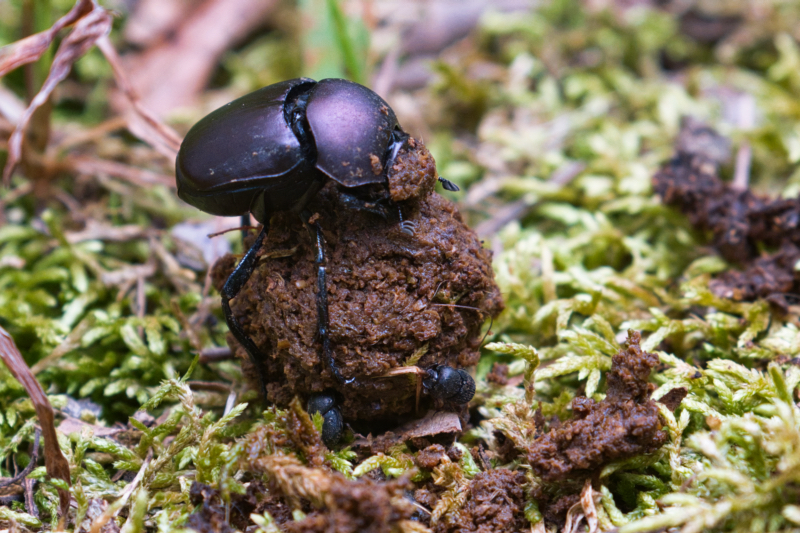While doing some yard work recently, I spotted a dung beetle diligently rolling a ball of poop, with tiny baby beetles clinging to the sphere. This reminded me of the unique and fascinating life cycle of dung beetles, especially their young.

Baby dung beetles, or dung beetle larvae, have a rather remarkable journey from egg to adulthood. After female dung beetles lay their eggs in dung balls or piles, the larvae hatch and immediately begin feeding on the nutrient-rich dung. These cream-colored, C-shaped larvae go through several molts over the course of 1-4 weeks as they grow.
Once the larval stage is complete, the dung beetle larvae then pupate, undergoing a transformation that can last for several weeks to months. During this pupal stage, they develop into the adult beetles we recognize.
The feeding habits of baby dung beetles versus adult dung beetles are quite different. While the larvae focus on consuming the solid parts of the dung, which are high in undigested plant material, the adults often just suck up the nutrient-rich moisture found in the dung.
Dung beetles are classified into three main types – rollers, tunnellers, and dwellers – each with their own unique behaviors that impact their young. Rollers transport dung balls away from the pile to lay their eggs in, providing a ready food source for the larvae. Tunnellers dig below the dung pile and lay eggs in the tunneled dung. And dwellers lay their eggs directly within the dung pile itself.
Beyond their fascinating life cycle, baby dung beetles play a crucial role in their ecosystems. By consuming and burying dung, they help recycle nutrients and aerate the soil, supporting plant growth. They also reduce the breeding grounds for pests like flies.
Dung beetles are remarkably strong for their size, with some species able to pull dung balls over 1,000 times their own body weight. They also have an impressive sense of navigation, able to detect dung from great distances and roll their balls in straight lines.
From the moment they hatch, baby dung beetles are fascinating creatures. Their lifecycle, feeding habits, and ecological importance make them truly remarkable insects worthy of further study and appreciation. The next time you spot a dung beetle hard at work, take a moment to marvel at the incredible journey of its young.
